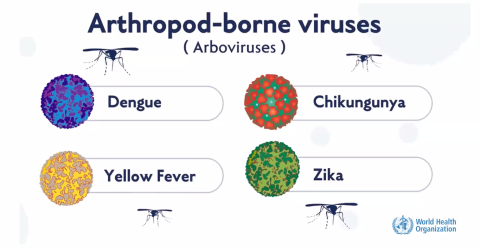Egyptian Rousette bats co-infections present a significant public health concern, especially in regions like Uganda and Sierra Leone. Studies have revealed that 1.3% of these bats are co-infected with several zoonotic viruses, including the notorious Marburg and Sosuga viruses. The ability of these bats to harbor multiple pathogens, such as the Kasokero virus, increases the risk of virus spillover to humans, elevating potential public health threats. This highlights the urgent need for preventive measures and awareness regarding the handling and consumption of fruits in areas where these bats reside. Understanding the dynamics of these co-infections is crucial for managing and mitigating the zoonotic risks associated with Egyptian Rousette bats in their native habitats.
Co-infections in Egyptian Rousette bats, also known as Rousettus aegyptiacus, reveal a complex interaction between various pathogens, posing severe threats to human health. These bats are significant reservoirs for several zoonotic viruses, notably from the Marburg virus group, which includes other strains like the Sosuga and Kasokero viruses. When bats carry multiple viral agents simultaneously, this co-infection phenomenon can lead to increased virus mutation and transmission potential to humans. Recognizing the implications of these viral interactions is essential for public health strategies aimed at preventing outbreaks linked to bat populations. The importance of thorough safety practices, such as sanitizing fruits harvested in bat-inhabited regions, cannot be overstated, as these measures are critical in reducing exposure to these zoonotic viruses.
Understanding Zoonotic Viruses in Egyptian Rousette Bats
Zoonotic viruses pose significant public health risks, particularly those associated with wildlife species such as the Egyptian rousette bats (ERBs). Studies indicate that these bats serve as important reservoirs for various zoonotic viral pathogens, including the Marburg virus (MARV), Sosuga virus (SOSV), Kasokero virus (KASV), and Yogue virus (YOGV). Given the high genetic diversity of viruses found in bats, understanding the transmission dynamics and potential co-infections is critical for preventing outbreaks in humans and livestock. Marburg virus, in particular, is notorious for its severe hemorrhagic fever and high mortality rates, emphasizing the urgent need for public health interventions focused on wildlife interactions.
In the context of zoonotic co-infections, the combination of multiple viruses within a single host, like the Egyptian rousette bats, complicates our capacity to predict and manage public health threats. Co-infections increase the likelihood of more severe disease manifestations and can affect the human-animal interface, where transmission occurs. As researchers discover new viral strains and their complex interactions, it becomes essential to explore effective monitoring strategies to safeguard both animal health and human safety.
Frequently Asked Questions
What are Egyptian Rousette Bats Co-Infections and why are they significant?
Egyptian Rousette Bats co-infections refer to instances where the bats host multiple zoonotic viruses, specifically Marburg virus, Sosuga virus, Kasokero virus, or Yogue virus. These co-infections are significant as they highlight the potential risk of emerging infectious diseases that can affect both animal and human health.
How do Egyptian Rousette Bats contribute to public health threats?
Egyptian Rousette Bats pose public health threats due to their role as reservoirs for various zoonotic viruses, including Marburg and Sosuga viruses. The presence of these viruses in bat populations can increase the likelihood of spillover events, leading to human infections if direct contact with these animals or their habitats occurs.
What precautions should be taken to avoid Egyptian Rousette Bats Co-Infections?
To prevent Egyptian Rousette Bats co-infections, individuals should avoid areas inhabited by these bats, refrain from direct contact with them, and ensure that any fruits harvested from areas where they are found are thoroughly washed. These measures can help minimize the risk of zoonotic virus transmission.
What are the symptoms associated with viruses found in Egyptian Rousette Bats?
The symptoms associated with viruses like Marburg and Sosuga found in Egyptian Rousette Bats can vary but may include fever, fatigue, and gastrointestinal issues. Severe cases can lead to hemorrhagic fever, which poses serious health risks, highlighting the importance of monitoring and controlling exposure.
Why is research on Egyptian Rousette Bats and their co-infections important?
Research on Egyptian Rousette Bats and their co-infections is essential for understanding the dynamics of zoonotic virus transmission. It allows public health officials to assess risks, implement surveillance measures, and develop guidelines for reducing exposure to these viruses in human populations.
What role do Egyptian Rousette Bats play in the ecology of zoonotic viruses?
Egyptian Rousette Bats play a critical ecological role as natural reservoirs for zoonotic viruses, including Marburg and Sosuga viruses. Their ability to host multiple viruses simultaneously enhances the genetic diversity of these pathogens and increases the risk of new virus strains emerging that could affect human health.
What should the public know about Marburg and Sosuga viruses in relation to Egyptian Rousette Bats?
The public should know that Marburg and Sosuga viruses can be found in Egyptian Rousette Bats and are associated with serious disease outbreaks. Awareness of their existence and the conditions that facilitate the spread of these viruses is crucial for prevention and public health safety.
How do environmental factors influence Egyptian Rousette Bats Co-Infections?
Environmental factors such as habitat destruction, changes in land use, and climate change can influence Egyptian Rousette Bats co-infections. These changes can alter bat behavior, increase human-bat interactions, and consequently elevate the risk of zoonotic virus transmission.
What methods are used to study co-infections in Egyptian Rousette Bats?
Researchers employ various methods to study co-infections in Egyptian Rousette Bats, including field capture of bats, collection of visceral samples, and molecular testing for the presence of zoonotic viruses. These studies help identify the prevalence and combinations of viruses present.
Are there any effective treatments for infections caused by viruses from Egyptian Rousette Bats?
Currently, there are no specific treatments for infections caused by viruses like Marburg and Sosuga viruses found in Egyptian Rousette Bats. Supportive care is essential, and public health measures focus on prevention through education, surveillance, and controlling bat interactions.
| Key Points |
|---|
| 1.3% of Egyptian rousette bats were co-infected with viruses in Uganda and Sierra Leone. |
| Co-infections included Marburg, Sosuga, Kasokero, and Yogue viruses. |
| Bats are reservoirs for over 4,100 distinct animal viruses. |
| Common sites for co-infections are Kitaka Mine (Uganda) and Kasewe Cave (Sierra Leone). |
| Preventive measures include avoiding ERBs and cleaning harvested fruits. |
Summary
Egyptian Rousette Bats Co-Infections represent a significant public health concern, particularly in regions like Uganda and Sierra Leone. The presence of viral co-infections in approximately 1.3% of Egyptian rousette bats indicates an increased risk of zoonotic transmission to humans. This underscores the importance of implementing preventive measures such as avoiding contact with bats and ensuring proper cleaning of fruits harvested from contaminated areas. Awareness and precautionary actions are essential to mitigate the potential spread of these infectious agents.
The content provided on this blog (e.g., symptom descriptions, health tips, or general advice) is for informational purposes only and is not a substitute for professional medical advice, diagnosis, or treatment. Always seek the guidance of your physician or other qualified healthcare provider with any questions you may have regarding a medical condition. Never disregard professional medical advice or delay seeking it because of something you have read on this website. If you believe you may have a medical emergency, call your doctor or emergency services immediately. Reliance on any information provided by this blog is solely at your own risk.








